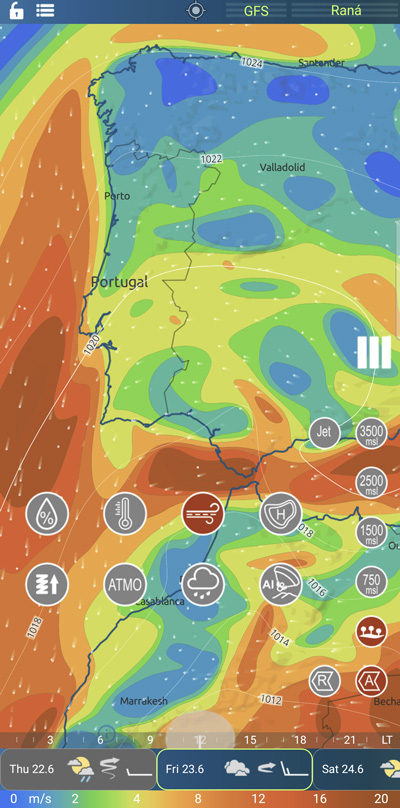Now also free widgets
How to do it, gust absolute
(absolute gust is the maximum wind force for a given time interval)
Select the main map icon for "wind" and on the right side, you can choose a icon "A".
Arrows, flags or particles can also be set in "settings".

How to do it, gust relative
(relative gust is the difference between the maximum wind force and the base wind)
Select the main map icon for "wind" and on the right side, you can choose a icon "R".
Arrows, flags or particles can also be set in "settings".

A gust of wind is a brief increase in wind speed and intensity.
It occurs as a result of various meteorological phenomena such as thunderstorm systems, frontal passages, or flow around mountains. Gusts are characterized by sudden changes in wind direction, wind force, and temperature.
In paragliding, gusty winds can have a significant impact on the flying conditions and the safety of the pilots. Strong gusts can create instability in the paraglider and make it challenging to maintain control. This can lead to undesired movements, turbulence, and potentially dangerous situations. Pilots need to be able to respond to gusts, stabilize their flight, and adapt their technique and decision-making to the current conditions.
When flying in areas prone to gusty winds, it is crucial to have sufficient experience and skills to handle them properly. Pilots should monitor meteorological information and warnings regarding the arrival of strong gusts. It is also important to be aware that gusts can be locally influenced by terrain, vegetation, and the proximity of water bodies.
Safety is always the top priority in paragliding. Pilots should have appropriate equipment, a good understanding of the flying conditions, and the ability to adjust their plans according to the current situation.
